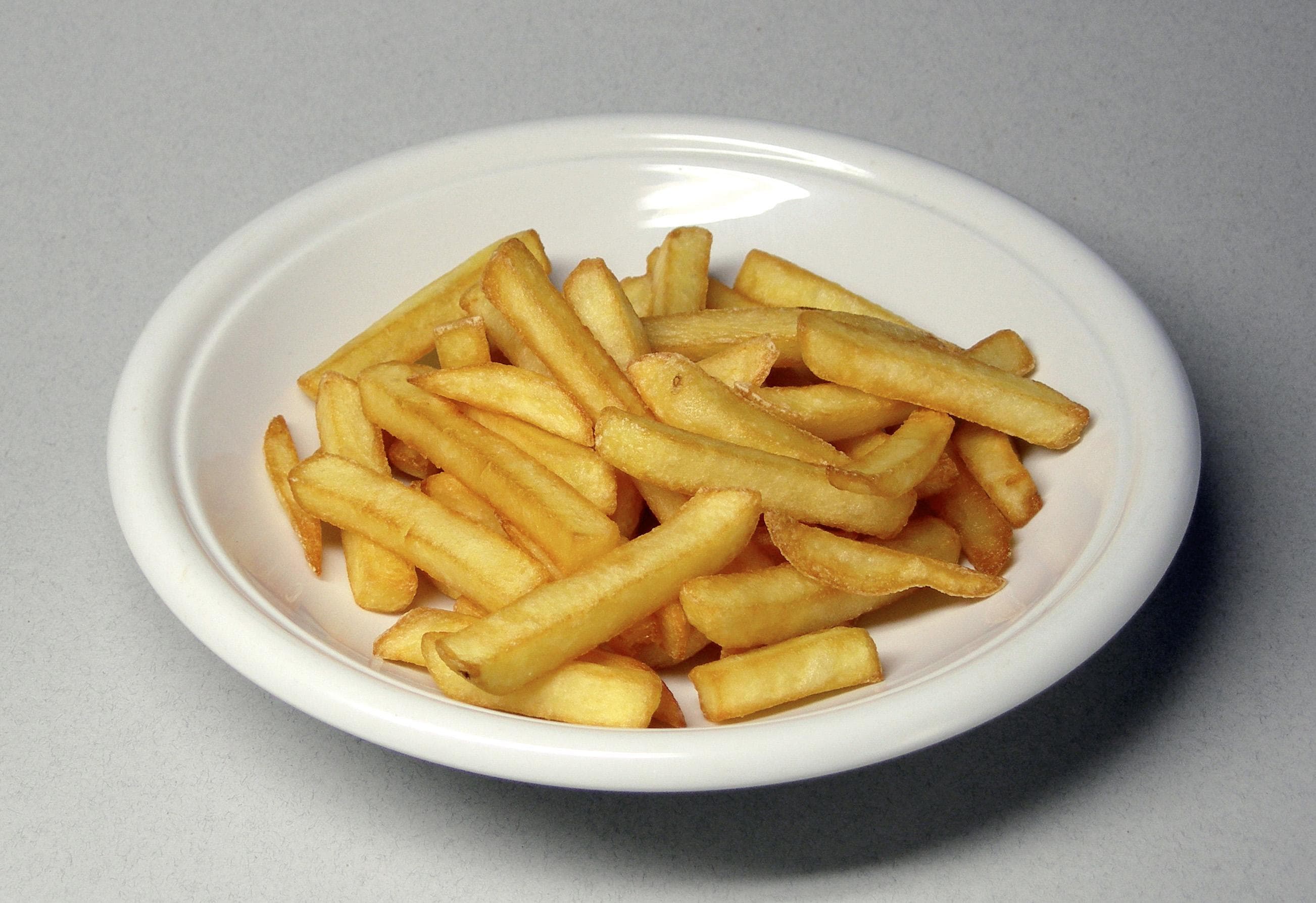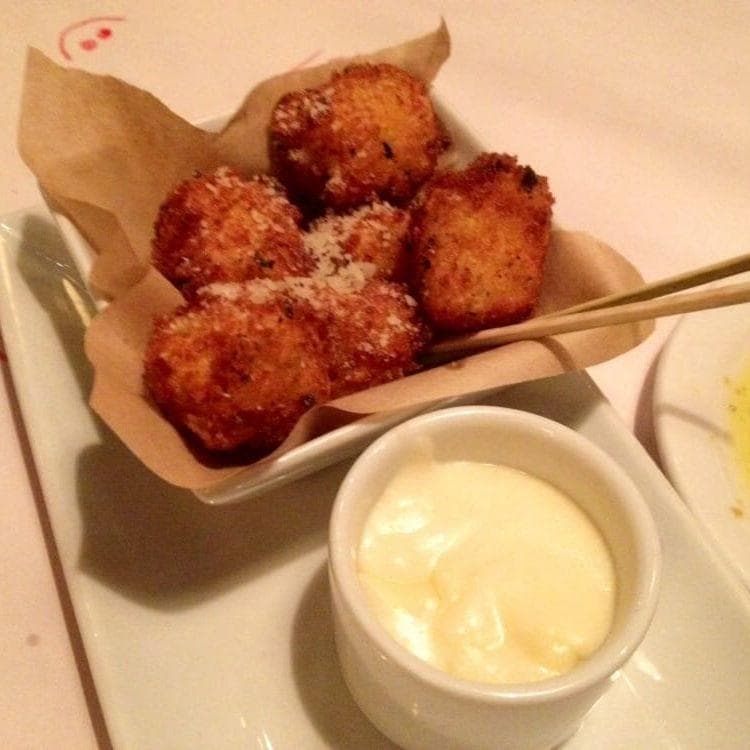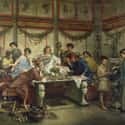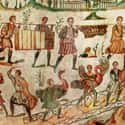-
(#1) Braised Flamingo
According to Apicius, a collection of Roman recipes and cooking practices dating back to the first century AD, flamingo was one of the rare birds enjoyed by the Roman elite. The book, also known as De Re Coquinaria, is thought to have been the work of Marcus Gavius Apicius, a Roman foodie who lived during the reign of Emperor Tiberius (r. 14-37 AD).
Apicius describes how flamingo was to be prepared:
Scald the flamingo, wash and dress it, put it in a pot, add water, salt, dill, and a little vinegar to be parboiled. Finish cooking with a bunch of leeks and coriander, and add some reduced must [grape juice or wine] to give it color. In the mortar crush pepper, cumin, coriander, laser root, mint, rue, moisten with vinegar, add dates, and the fond [drippings] of the braised bird, thicken, strain, cover the bird with the sauce and serve.
An alternative recipe involved roasting the bird with pepper, herbs, "dates, honey, wine, broth, vinegar, and oil," reducing the mixture to taste.
Described by Pliny the Elder as a special flavor, flamingo was served similarly to parrot, and may have tasted very much like duck.
-
(#2) Soft-Boiled Eggs In Pine Nut Sauce
Romans very much enjoyed eggs, and they were often featured as appetizers. Eggs could be fried and served with wine sauce or boiled and seasoned with "broth, oil, pure wine, or... broth, pepper, and laser (a popular herb)."
Another common egg dish was a soft-boiled or poached egg with a sauce made out of pepper, soaked pine nuts, honey, vinegar, and garum (fish paste).
Preparing the pine nuts for the dish would have required soaking them overnight, draining them, and using a mortar to pound them. Once they were mixed with pepper, honey, and fish paste, the sauce was heated while the eggs were boiled. When served, the sauce was poured over whole peeled eggs in a bowl.
-
(#3) Ostrich Ragout
Much like flamingo, ostrich was another exotic meat enjoyed by Romans, albeit only on unique occasions. Galen, a second-century Greek physician and scholar, described ostrich meat as "excrementitious and much more difficult to digest than the meat of [other birds]... although their wings are no worse than others."
This didn't stop people from eating it, however. Emperor Elagabalus (r. 218-222) was said to have "served ostriches" at banquets, insisting "the Jews had been commanded to eat them" as a joke mocking Jews within the Roman world.
Apicius has two recipes for ostrich, both dishes that included vegetables, herbs, and chunks of meat in stew-like fashion. One boiled ostrich ragout was seasoned with "pepper, mint, cumin, leeks... dates, honey, vinegar, raisin wine, and broth." Oil was added, as well, and the stock was brought to a boil to cook the ostrich meat. Once the meat was drained, the mixture was thickened before putting the meat back in and serving to taste.
The second ostrich stew featured flavors like "pepper, thyme, honey, mustard," and vinegar.
Ostrich eggs were desirable, as well, with one egg feeding as many as eight people.
-
(#4) Lobster Croquettes
According to Apicius, lobster was the third highest-ranking dish, falling behind peacock and rabbit. Lobster was often boiled but was also featured in croquettes - small, breaded balls of meat or vegetables.
Romans enjoyed cuttlefish, lobster, and crab meat croquettes, all of which required extracting meat from the respective creature, mincing it, and adding pepper and fish broth. To bind the meat together in a small cake, they added flour, egg, or potato, then they fried the croquette or braised it in an ancient Roman fish sauce called liquamen.
-

(#5) Hazelnut Custard
Nut custard was a sweet dish enjoyed by Romans as a porridge or a pudding, depending on the amount and type of milk, egg, and flavoring one added to the mix.
Nut custards could also be eaten as turnovers or tarts. One of Apicius's recipes calls for crushing "very fine walnuts and hazelnuts" before toasting them, adding honey, and blending them with "pepper, broth, milk, and eggs, and a little oil."
Another of the sweet nut treats described by Apicius included pine nuts, or pignolia, again chopped and roasted with honey and mixed with pepper, broth, milk, eggs, and still more honey. Raisins could be thrown in, too, for a touch of extra sweetness.
Heat thickened the nut-based mixture, which was then put into molds and "baked in [a] hot water bath." They were cooled and served, probably with more honey drizzled on top.
-
(#6) Asparagus Pie
Highly regarded in the Roman world, asparagus was described by Pliny the Elder as "extremely wholesome as an ailment to the stomach... it sharpens the eyesight... is good for pains in the chest and spine, and diseases of the intestines... acts as an aphrodisiac, and is an extremely useful diuretic."
While often served cold, Apicius recommended first peeling, washing, and boiling the vegetable to cook it. To make asparagus pie, one had to crush and strain the asparagus before adding pepper, coriander, and onions to a mixture of wine, broth, and oil. After thickening it with eggs, meat from a figpecker - a small bird that enjoyed figs, hence its name - could be added in.
Asparagus pie was then baked and served with sprinkling of pepper.
-
(#7) White Bread
Bread in the Roman world was tied to social status, with "hard and dirty" bread being enjoyed by poor men and women. As a staple food, bread could be simple, including nothing more than a little salt, or elaborately baked with honey, nuts, and a variety of grains. Pliny the Elder even mentions oyster bread alongside numerous other options.
Wealthy Romans mostly ate white bread, which was made using fine flour from a wheat called siligo. It was often incorporated into other dishes, but aristocratic Romans also ate white bread on its own. They often removed the crust, soaked the bread in a mixture of milk and eggs, fried it in oil, and covered it with honey.
-

(#8) Sow Udders And Pig Bellies
Sow udders, wombs, and bellies were eaten a variety of ways - all, however, were considered delicacies. Roman foodies would commonly eat them lightly seasoned with pepper, celery seed, mint, honey, and vinegar; pickled, grilled, or fried; or mixed into casserole-type dishes.
A stuffed sow belly was first boiled, then roasted, and seasoned with pepper, wine, brine, or mustard. Apicius describes an elaborate "every-day recipe" as such:
Pieces of cooked sow's udder, pieces of cooked fish, chicken meat, and similar bits, mince uniformly, season well, and carefully. Take a metal dish [for a mold].
Break eggs [in another bowl] and beat them.
In a mortar put pepper, lovage, and origany, which crush. Moisten [this] with broth, wine, raisin wine, and a little oil; empty it into the bowl [with the beaten eggs, mix] and heat it [in the hot water bath]. Thereupon when [this is] thickened mix it with the pieces of meat.
Now prepare [alternatively] layers of stew and pancakes, interspersed with oil [in the metal mold reserved for this purpose] until full, cover with one real good pancake, cut into it to vent hole for chimney on the surface [bake in hot water bath and when done] turn out upside down into another dish. Sprinkle with pepper and serve.
Pig paunches were also eaten as a treat. A hollowed-out pig stomach was filled with pork, "brains - with nerves removed," eggs, nuts, and seasoning, then cooked halfway. After opening the paunch, the mixture was then breaded and cooked again.
-
(#9) Lucanian Sausages
Said to have been brought back to Rome by soldiers serving in the South of Italy during the late Republic, Lucanian sausages were served as hors d'oeuvres - Cicero (106-43 BC) once had his "appetite spoilt by [the] olives and Lucanian sausages" served by an associate in Naples - and were among numerous sausages mentioned by Apicius.
Crush pepper, cumin, savory, rue, parsley, condiment, laurel berries and broth; mix with finely chopped fresh pork and pound well with broth. To this mixture, being rich, add whole pepper and nuts. When filling casings carefully push the meat through. Hang sausage up to smoke.
Sausages like botellum included hard-boiled egg yolks, while farcimina integrated brains into the mixture. Sausages were served whole or cut into slices with salt, mustard, pheasant gravy, and cumin.
-

(#10) Dulciaria
Confections, or dulciaria, were commonly made using honey, since sugar was a rare commodity even for the wealthiest Romans.
Dulciaria could have been seedless dates stuffed with nuts and pepper and candied in honey. Other sweets integrated milk and eggs into the recipes, and were most likely prepared by professional confectioners in Rome.
Fruits weren't the only foods covered in honey, however. According to the Satyicon - the first Roman novel, written during the first century AD - the Roman dormouse, a rat that was intentionally fattened up while living in a small jar, was served "seasoned with honey and poppy-seed."
Romans also ate sweet almonds and sweet chestnuts, often incorporated into desserts. Cheesecakes and other fruit-based dishes were also served as dessert.
-
(#11) Fish Liver Pudding
Fish was so fundamental to the Roman diet that garum, or fish sauce made from the guts of "small fish, particularly smelt, red mullet, sprats, or anchovies" could be added to a variety of dishes.
Because using all parts of the fish was ideal, fish livers were not discarded. Instead, they were mixed in with other animal livers and served as a meal. Fish liver pudding usually began with the liver of a mullet fish.
The liver was crushed and mixed with pepper and oil before the livers of hares, lambs, or chickens were added. The whole mixture was pressed into a mold, baked, and then sprinkled with oil.
-

(#12) Sea Scorpion With Turnips
Identified by Pliny the Elder as a vegetable that could withstand extreme cold, turnips could be green, sweet, tall, short, or round, and were served on their own or with fish, crane, or duck.
Turnips were boiled and covered in oil and vinegar as a salad, or crushed and mixed with herbs to make a warm soup. When combined with sea scorpion, they were boiled, chopped, and squeezed over the sea scorpion, and left to simmer with cumin, laurel berries, and saffron.
According to the recipes handed down by Apicius, Romans also used other root vegetables like carrots, radishes, and parsnips. Carrots and parsnips were fried, boiled, pureed, or stewed, but were rarely, if ever, combined with meats. The sea scorpion recipe is somewhat unique in its inclusion of a root vegetable and protein.
-
(#13) Salacaccabia
Also known as Apician jelly, salacaccabia was a blend of soaked bread, seasoning, nuts, vegetables, and meat, all molded together and served cold.
A traditional Apician jelly, according to Apicius, was made as follows:
Put in the mortar celery seed, dry pennyroyal, dry mint, ginger, fresh coriander, seedless raisins, honey, vinegar, oil and wine; crush it together [in order to make a dressing of it].
Place 3 pieces of Picentian bread in a mold, interlined with pieces of [cooked] chicken, [cooked] sweetbreads of calf or lamb, cheese, pignolia nuts, cucumber, finely chopped dry onions [shallots] covering the whole with [jellified] broth.
Bury the mold in snow up to the rim; sprinkle [with the above dressing] and serve.
Adding pieces of Picentian bread, made of spelt, was one option. Apicius also suggests hollowing out a loaf of bread, stuffing it with a paste made from wine, water, and vinegar with "pepper, honey, mint, garlic, fresh coriander, salted cow's cheese, water, and oil."
New Random Displays Display All By Ranking
About This Tool
The expansion of the Roman Empire exposed the Romans to the eating habits and cooking skills of many other regions. In the beginning, the diets of the various classes of ancient Rome were not very different. As the empire became rich and powerful, the food of the rich gradually became abundant and luxurious. The vast Mediterranean Sea provided abundant aquatic resources for the ancient Roman Empire. Lobster, the most popular food nowadays, was also a common noble food at the peak of the Roman Empire.
Food played an important role in the development of human civilization. By the time of the heyday of the empire, the food culture of ancient Romans had undergone great changes. You could check the collection of 13 delicious foods from the Roman Empire.
Our data comes from Ranker, If you want to participate in the ranking of items displayed on this page, please click here.



















